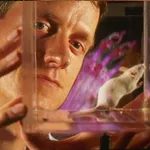
Dr. Kingsley's lab focuses on the naturally occurring species show spectacular differences in morphology, physiology, lifestyle, and behavior. They also differ in disease susceptibility and life span. Although the genomes of many organisms have now been completely sequenced, we still know relatively little about the specific DNA sequence changes that underlie interesting species-specific traits. The laboratory is using a combination of genetic and genomic approaches to identify the detailed molecular mechanisms that control evolutionary change in vertebrates, with a focus on five fundamental questions:
- Are new evolutionary traits controlled by countless genetic differences of small effect, or by a few genetic changes with large effects?
- What specific genes have changed to produce interesting evolutionary differences seen in nature?
- What kinds of mutations have occurred in these genes (e.g., dominant or recessive, coding or regulatory, preexisting or de novo)?
- How predictable is evolution? If you know how evolution has occurred in one population, is it possible to predict the genes and mutations that also underlie the same trait in different populations?
- How has evolution produced the unique characteristics of humans?
They study these questions using a variety of methods in mice, sticklebacks, and people.




